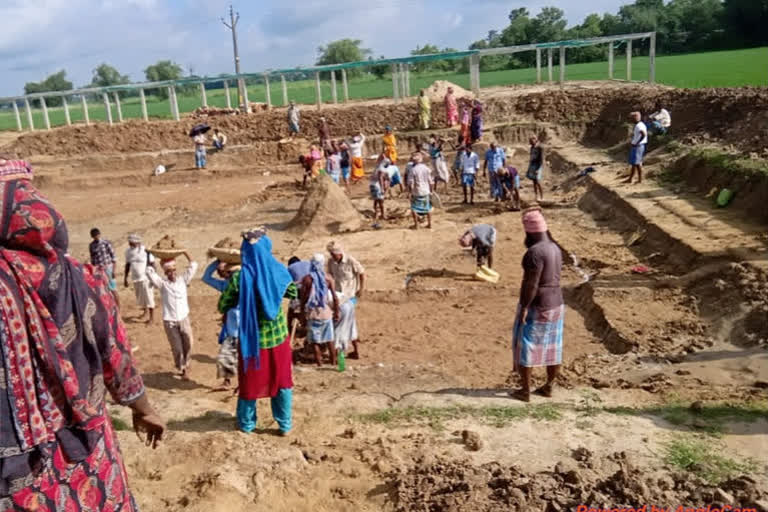Kolkata: Mahatma Gandhi National Rural Employment Guarantee Act (MGNREGA), the Union government's ambitious programme to provide at least 100 days of work to the adult population in the country, is witnessing a rather interesting twist. While the younger population between 18-30 years, for whom the Dr Manmohan Singh UPA (1) government introduced the scheme primarily, is showing its back, senior citizens aged between 61 and 80 years, have been increasingly seeking employment under the scheme to earn their livelihood.
As per the latest statistics of the Ministry of Rural Development, while the popularity graph of the work scheme has declined dramatically for the age group between 18 and 30 years in West Bengal, the same graph has shown an impressive upward trend for the senior citizens in the age group of 61 and 80 years.
This was revealed by the ministry after a two-day meeting on July 7 and July 8 in New Delhi. The ministry has come out with detailed statistics on state-wise acceptance of the 100- day work scheme in specific age groups. The ministry's compiled statistics have been prepared on the basis of the data provided by the different state rural development departments.
READ: MGNREGA gives work to people below poverty line in J-K's Dhangri
As per the statistics in 2013-14, in West Bengal, there were 13,35,816 beneficiaries of the work scheme in the age bracket of 18 and 30 years. However, the number of beneficiaries in the same age bracket declined to 7,73,027 in the last concluded the financial year of 2020-21.
While in 2013-14, the percentage of beneficiaries under this age bracket was 14.56 per cent of the total beneficiaries, in 2022-21 the percentage figure has declined to 6.53 per cent. Quite a reverse picture has been reflected in the case of the statistics for the senior citizens of West Bengal in the age group of 61 to 80 years.
In 2013-14, in West Bengal, there were 8.75,005 beneficiaries of the work scheme in the age bracket of 61 and 80 years. However, the number of beneficiaries in the same age bracket increased to 15,68,370 in the last concluded the financial year of 2020-21. While in 2013-14, the percentage of beneficiaries under this age bracket was 9.5 per cent of the total beneficiaries, in 2022-21 the percentage figure has skyrocketed to 13.26 per cent.
Economic analysts feel that although the work scheme provides a sustainable income to the rural population, its proceeds cannot provide the means to meet all the requirements around the year. According to them, the youths need other avenues of sustainable income.
"And now it is clear that in the absence of big industries in the manufacturing or the services sector, there are hardly any alternatives for maintaining the round-the-year income. So from the statistics, it is clear that during the last seven years there had been a huge migration of youths from West Bengal to other states and hence takers for the 100- day work scheme has declined in case of the age bracket between 18 and 30 years. And senior citizens in the age bracket are filling up this gap created by the migration," said economist Probir Kumar Mukhopadhyay.
READ: Karnataka Minister visits Kalaburagi district to inspect work done under MGNREGA
However, CPI(M) central committee member in West Bengal assembly Dr Sujan Chakraborty said that while migration among the state's youths is surely a reason, another reason is that the system of commission to the ruling party leaders for becoming a beneficiary of the 100 days work scheme has made the scheme unattractive for the youths.



